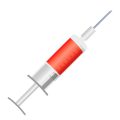Introduction to Indie Beauty and Sustainability
In recent years, the American beauty industry has seen a remarkable shift. Indie beauty brands are taking center stage, offering fresh perspectives and innovative products that resonate with today’s conscious consumers. Unlike traditional big-name cosmetic companies, indie brands are typically independently owned, often started by passionate founders who want to make a difference in the world of beauty.
What Are Indie Beauty Brands?
Indie beauty brands are small, independent businesses that focus on unique formulations, authentic stories, and a strong commitment to values. Many of these brands are founded by individuals or small teams who care deeply about the ingredients they use and the impact their products have on people and the planet. They’re not just following trends—they’re setting them.
The US Indie Beauty Market at a Glance
| Feature | Indie Brands | Traditional Brands |
|---|---|---|
| Ownership | Independent/Founder-led | Corporation-owned |
| Product Development | Agile & Innovative | Slower, Often Mass Market |
| Sustainability Focus | Core Value | Gradual Adoption |
| Consumer Connection | Direct & Personal | Distant & Corporate |
| Typical Distribution | Boutiques, Online, Pop-ups | Mainstream Retailers, Department Stores |
A Growing Demand for Sustainable Beauty Products
American shoppers today are more eco-conscious than ever before. They want beauty products that align with their values—clean ingredients, cruelty-free testing, minimal packaging, and ethical sourcing. According to industry surveys, nearly 70% of US consumers say sustainability influences their purchasing decisions when it comes to personal care items.
Key Factors Driving Consumer Demand:
- Transparency: Shoppers want to know what’s in their products and where those ingredients come from.
- Cruelty-Free: Many Americans look for brands that do not test on animals.
- Eco-Friendly Packaging: Reducing waste is a major concern for buyers across all age groups.
- Cultural Values: Supporting local businesses and minority-owned brands is increasingly important.
This rising demand has opened up new opportunities for indie beauty brands to lead the charge in sustainable innovation. By staying true to their values and listening closely to consumer needs, these brands are setting new standards for the entire industry.
2. Creative Approaches to Eco-Friendly Packaging
Indie beauty brands in the United States are shaking up the industry by rethinking how products are packaged. These brands know that American consumers care about reducing waste and protecting the environment, so they’re making big strides with innovative, eco-friendly packaging solutions. Here’s a look at how indie brands are leading the way.
Recyclable Packaging That Makes a Difference
Many indie beauty brands are moving away from traditional plastic and switching to recyclable materials like glass, aluminum, and cardboard. These materials are easy for most Americans to recycle at home or at local recycling centers. Some brands even use post-consumer recycled (PCR) content, which means the packaging is made from materials people have already recycled.
Refillable Options: Less Waste, More Value
Refillable packaging is another smart solution that indie brands are embracing. Instead of buying a new container each time, customers can purchase refills—saving money and cutting down on single-use plastics. This approach appeals to U.S. shoppers who want both convenience and sustainability.
Examples of Refillable Packaging:
| Brand | Product Type | How It Works |
|---|---|---|
| Fenty Beauty | Foundation | Buy a reusable case and swap in refill cartridges |
| Kjaer Weis | Lipstick & Blush | Metal cases designed for easy refilling |
| The Body Shop | Shampoo & Conditioner | Refill stations available in select U.S. stores |
Compostable Packaging for a Greener Tomorrow
Some indie brands are taking things a step further by offering compostable packaging made from materials like cornstarch, bamboo, or mushroom fibers. These containers break down naturally in compost bins, leaving behind no harmful residue. This option is especially popular among eco-conscious Americans who want their beauty routines to leave as little impact as possible.
Why American Shoppers Love These Solutions:
- Simplicity: Easy-to-recycle or refill packaging fits busy lifestyles.
- Transparency: Brands clearly explain how to dispose of or reuse packaging.
- Community Impact: Many companies partner with local recycling programs or nonprofits to promote sustainability nationwide.
By prioritizing recyclable, refillable, and compostable options tailored to the needs of U.S. consumers, indie beauty brands aren’t just following trends—they’re setting them. Their creative approaches help shape the future of sustainable beauty in America.

3. Innovative Ingredients and Transparent Sourcing
Indie beauty brands across the United States are making waves by rethinking what goes into your favorite skincare and makeup products. Consumers today are not just looking for effective results—they want to know their beauty choices are good for the planet and ethically made. Let’s take a closer look at how indie beauty brands are exploring plant-based, cruelty-free, and locally-sourced ingredients, as well as how they’re building trust with transparent sourcing.
Plant-Based and Cruelty-Free Choices
Many indie brands are swapping out synthetic chemicals for natural, plant-based ingredients like aloe vera, chamomile, green tea, and jojoba oil. These ingredients not only nourish the skin but also align with consumer values of health and sustainability. Plus, cruelty-free formulas—meaning no animal testing—are now the gold standard for indie brands in the US. Shoppers love to see that bunny logo or “vegan” label on their favorite serums and lip balms!
Common Plant-Based Ingredients Used by Indie Brands
| Ingredient | Benefit | Source Example |
|---|---|---|
| Aloe Vera | Soothes & hydrates skin | Organic farms in California |
| Green Tea Extract | Antioxidant protection | Sustainable growers in Oregon |
| Jojoba Oil | Mimics skin’s natural oils | Local cooperatives in Arizona |
| Calendula Flower | Calms irritation | Community gardens in Vermont |
Sourcing Locally for a Smaller Footprint
Indie beauty brands often choose to source ingredients from local farmers and suppliers. This not only supports American agriculture but also helps reduce carbon emissions from long-distance shipping. Whether it’s lavender from small farms in Washington State or honey from local beekeepers in Texas, these choices make products fresher and more sustainable.
Transparency Builds Trust with Customers
Today’s shoppers want to know exactly where their products come from. Indie brands answer this call with clear communication about ingredient sourcing, manufacturing practices, and ethical standards. Many use detailed labels, interactive QR codes on packaging, or dedicated sections on their websites so consumers can trace each ingredient back to its source.
How Indie Brands Share Transparency Information:
| Method | Description | Example in Use |
|---|---|---|
| Product Labels | Chemical-free ingredient lists and sourcing details printed directly on packaging. | “Sustainably harvested jojoba oil from Arizona” |
| Website Ingredient Maps | Interactive maps showing where each ingredient is grown or produced. | User clicks on a map pin to learn about the farmer behind their lavender oil. |
| QR Codes on Packaging | Scannable codes that link to videos or stories about how products are made. | A QR code links to a video tour of a local farm supplying calendula flowers. |
| Sustainability Reports | Annual public reports detailing sourcing practices and environmental impact. | A downloadable PDF outlining goals for zero-waste packaging. |
This commitment to innovative ingredients and transparent sourcing is helping indie beauty brands earn loyal fans who care about both people and the planet. Their approach is reshaping what it means to be truly sustainable in today’s ever-evolving beauty industry.
4. Community-Driven Values and Social Impact
How Indie Beauty Brands Are Engaging With Local Communities
Indie beauty brands in the US are making a real difference by connecting with local communities. They aren’t just selling products—they’re building relationships and creating positive change. Many brands host local pop-up events, partner with small businesses, or source ingredients from nearby farms. These actions help boost local economies and show that the brand truly cares about its roots.
Examples of Community Engagement
| Brand Action | Impact on Community |
|---|---|
| Hosting skincare workshops at neighborhood centers | Empowers locals with knowledge and builds trust |
| Sourcing ingredients from local farmers | Supports sustainable agriculture and small business growth |
| Partnering with artists for packaging design | Provides exposure and income to local creatives |
| Sponsoring clean-up drives or wellness fairs | Improves community well-being and environment |
Supporting Causes That Matter
Indie beauty brands know that today’s customers care about more than just what goes into their skincare or makeup—they want to know what the brand stands for. Many indie brands support causes like environmental protection, social justice, or women’s empowerment. Whether it’s donating a portion of profits to nonprofits, running campaigns during awareness months, or using their platform to speak up about important issues, these efforts resonate deeply with American consumers.
Ways Brands Support Causes
- Charitable Giving: Donating a percentage of sales to organizations that align with their values.
- Awareness Campaigns: Sharing stories and educational content about issues like clean water access or cruelty-free testing.
- Diversity Initiatives: Featuring diverse models and collaborating with minority-owned suppliers.
- Sustainable Packaging: Using recyclable materials to reduce waste and highlight environmental responsibility.
Building Brand Loyalty Through Authentic Messaging
What sets indie beauty brands apart is their authentic voice. Instead of polished ads and celebrity endorsements, they often use real customer stories, behind-the-scenes content, and transparent communication. This honesty helps build strong connections with customers who value genuineness over perfection. Brands also encourage feedback through social media polls or reviews, making shoppers feel heard and appreciated.
Key Elements of Authentic Messaging
- User-Generated Content: Sharing customer before-and-after photos or testimonials on Instagram or TikTok.
- Open Conversations: Addressing both successes and challenges honestly with followers.
- Inclusive Language: Making everyone feel welcome regardless of background or skin type.
- Educational Posts: Explaining ingredient choices, sustainability practices, and how-tos in plain language.
This community-driven approach not only creates loyal fans but also turns customers into advocates who proudly share their experiences with others.
5. Challenges and Opportunities in Scaling Sustainability
Indie beauty brands are known for their creativity and passion, but making sustainable innovation a reality at scale comes with real challenges. Many small brands want to make eco-friendly choices, but they often hit some common hurdles along the way. Let’s break down these challenges and also look at the unique opportunities indie brands have to lead the industry.
Sourcing Sustainable Ingredients
One of the biggest obstacles is finding reliable sources for clean, ethical ingredients. Large beauty companies can buy in bulk and negotiate better deals, but indie brands usually order smaller quantities, which means higher costs and less bargaining power. Sometimes, suppliers won’t even work with smaller brands, or there might be limited access to certain rare, sustainable ingredients.
Common Sourcing Challenges
| Sourcing Challenge | Impact on Indie Brands |
|---|---|
| Minimum Order Quantities | Hard for small brands to meet supplier requirements |
| Ingredient Availability | Limited access to unique or eco-certified ingredients |
| Transparency Issues | Difficult to verify supply chain ethics and sustainability claims |
The Cost Factor
Sustainable materials, packaging, and production methods often cost more than traditional options. For indie brands on tight budgets, these expenses can add up fast. They may need to charge higher prices, which can be risky when competing with big-name products or mass-market alternatives.
Cost Considerations Table
| Sustainable Choice | Typical Extra Cost (%) | Reason for Higher Price |
|---|---|---|
| Biodegradable Packaging | 10–50% more expensive | Materials & small production runs raise prices |
| Ethically Sourced Ingredients | 15–40% more expensive | Fair labor and eco-certification costs passed on to brands |
| Cruelty-Free Testing Methods | 5–20% more expensive | Alternative testing processes can increase R&D costs |
Access to Resources and Networks
Larger beauty companies have entire teams dedicated to sustainability initiatives and easier access to green technology partners. Indie brands may struggle to keep up because they lack connections or insider knowledge about new solutions. Networking events or industry groups can help, but these often come with membership fees or invitation-only barriers.
The Silver Lining: Leading by Example
Despite the obstacles, indie beauty brands are uniquely positioned to move fast and test out bold ideas. Their smaller size lets them experiment with new formulas or eco-packaging without the slow approval processes of corporate giants. American consumers value authenticity—when indie brands share their journey openly online, it builds trust and attracts loyal customers who care about sustainability.
Opportunities for Indie Brands to Stand Out
- Nimble Innovation: Quick pivots allow for rapid testing of sustainable ideas.
- Storytelling: Sharing behind-the-scenes efforts on social media resonates with shoppers looking for transparency.
- Community Collaboration: Partnering with local farms or artisans creates unique products with a strong backstory.
As sustainability becomes a must-have in the beauty world, indie brands’ fresh thinking and genuine commitment put them in a powerful position to inspire positive change across the industry.
6. Looking Ahead: The Future of Indie Beauty Innovation
As indie beauty brands continue to lead the charge in sustainable innovation, its clear that their influence is only growing stronger. In the coming years, we can expect a number of emerging trends and predictions that will shape both the American market and the global beauty industry as a whole.
Emerging Trends in Indie Beauty
Indie brands have built their reputations on creativity and agility. Theyre often the first to adopt new materials, processes, and philosophies. Here are some key trends expected to dominate:
| Trend | Description | Potential Impact |
|---|---|---|
| Upcycled Ingredients | Using food waste or by-products from other industries as raw materials for skincare and cosmetics. | Reduces environmental footprint and supports a circular economy. |
| Waterless Formulas | Creating concentrated products that require less water during production and use. | Lowers water consumption and packaging needs. |
| Refillable Packaging | Offering reusable containers and refill stations at stores or online. | Minimizes single-use plastic waste. |
| Transparent Sourcing | Openly sharing where ingredients come from and how theyre processed. | Builds consumer trust and encourages responsible sourcing globally. |
| Diversity & Inclusion Initiatives | Developing products for all skin tones, types, and gender identities, while promoting ethical labor practices. | Makes beauty more accessible and socially responsible. |
How American Indie Brands Might Shape Global Standards
The U.S. has long been a trendsetter in pop culture and lifestyle, and its indie beauty scene is no exception. As these brands become more influential, they are poised to set new benchmarks for sustainability that could ripple out worldwide:
- Setting Higher Standards: By pushing for stricter ingredient transparency and eco-friendly packaging, American indie brands can inspire regulatory changes not just at home but internationally.
- Innovative Collaborations: Many U.S.-based indies are teaming up with scientists, local farmers, and even tech companies to create breakthrough formulas. These partnerships may serve as blueprints for global collaborations focused on sustainability.
- Cultural Influence: With social media reach and celebrity endorsements, American indie labels can quickly popularize sustainable practices beyond borders—making “green beauty” aspirational everywhere.
- Consumer Education: Through storytelling and digital content, these brands empower customers to make informed choices about what they buy, raising awareness about environmental issues around the globe.
The Road Ahead: What to Watch For
- Tech-Driven Personalization: Using AI for custom product recommendations based on skin type, climate impact, or personal values like vegan ingredients or zero-waste packaging.
- Bigger Retail Partnerships: More mainstream retailers are likely to feature sustainable indie lines, making green beauty accessible to everyone—not just niche shoppers.
- Sustainability Certification Growth: Expect an increase in third-party certifications (like USDA Organic or Leaping Bunny) as consumers look for proof of ethical practices.
The Takeaway for Beauty Lovers Everywhere
If you care about the planet—and your skin—keep an eye on America’s indie beauty innovators. Their creative ideas are shaping what’s next in sustainability, setting examples others around the world will likely follow. Whether it’s upcycled serums or refillable lipstick tubes, the future of beauty is looking greener than ever thanks to these pioneering brands!


